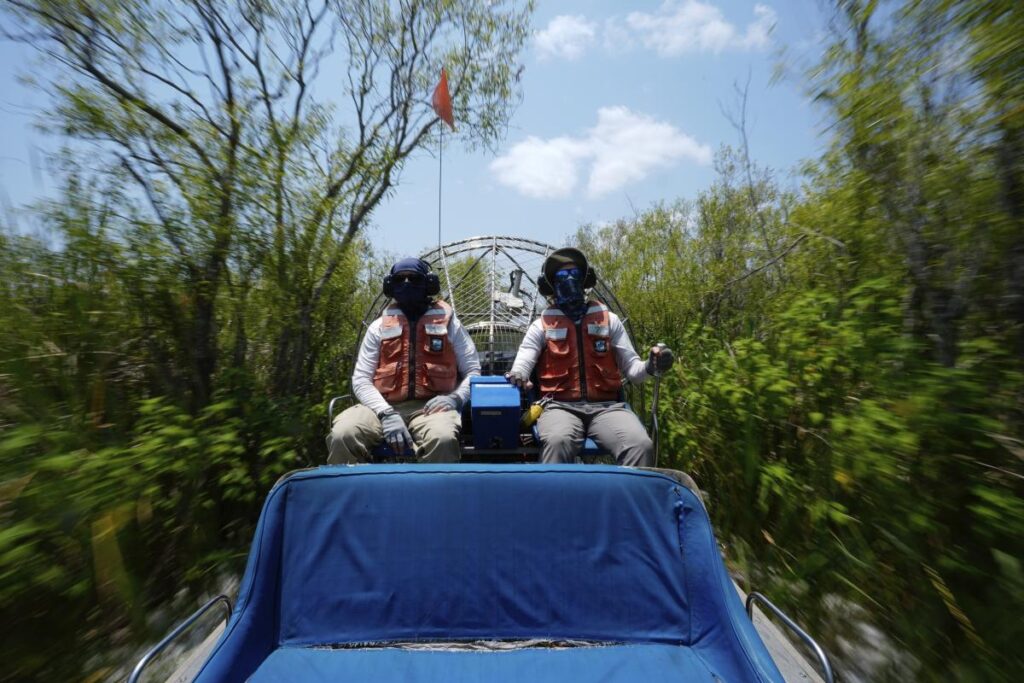The Everglades, a vital wetland ecosystem in southern Florida, have undergone significant transformation over the decades, leading to a dramatic decline in its expanse and ecological health. Once roughly twice the size of New Jersey, the Everglades are now reduced to around half of their original size due to extensive engineering projects that have partitioned and drained the water, coupled with the intrusion of invasive species and pollution primarily from agricultural activities. The natural flow of water, which traditionally moved from the Kissimmee River to Lake Okeechobee and onto Florida Bay, has been severely disrupted, affecting the wildlife and the overall environment of this unique landscape. This degradation prompted significant concerns about the ecological integrity of the Everglades and led to legislative action aiming to restore the wetlands to their former glory.
In 2000, Congress approved a large-scale restoration initiative that aims to rehabilitate the Everglades, with bipartisan support backing the endeavor. The project carries a substantial price tag of over $23 billion, with an estimated time frame of 50 years for its completion. As efforts progress into their second decade, there are emerging signs of improvement, including the return of wildlife to certain regions and a marked reduction of invasive species, particularly the melaleuca tree, by 75%. Despite these hopeful indicators, there is ongoing concern regarding significant budget overruns and the potential efficacy of various restoration efforts as stakeholders strive to address the myriad of issues facing this complex ecosystem.
The South Florida Water Management District has been pivotal in advancing restoration projects, having initiated or completed around 70 projects since 2019. In a significant financial commitment, lawmakers allocated $1.275 billion for the restoration efforts in the coming year, marking the largest annual funding amount to date. Among the critical projects is the Everglades Agricultural Area Reservoir Project, which includes a reservoir designed to retain excess water from Lake Okeechobee and an engineered wetland aimed at purifying that water before it is released back into the ecosystem. However, concerns linger regarding the reservoir’s size and depth, which could impact its effectiveness in achieving the desired water quality improvements.
Another notable initiative, the Western Everglades Restoration Project, recently broke ground after years of advocacy from the Miccosukee Tribe, intending to enhance water management in their ancestral lands. The elevation of sections of the Tamiami Trail—initially constructed to connect Tampa and Miami—has facilitated increased water flow into surrounding wetlands, promoting ecosystem health. Reconnections within the Everglades are fostering the return of native wildlife, such as wood storks and wading bird colonies, alongside new populations like flamingos, which were unexpectedly swept in by Hurricane Idalia. These developments may potentially serve as indicators that the extensive restoration endeavors are yielding positive outcomes.
Despite strides made in restoration, ongoing challenges persist. Climate change poses a significant threat to the Everglades, with concerns about rising sea levels, saltwater intrusion, and increasing temperatures affecting water runoff and biodiversity. A recent report to Congress highlighted the critical need to incorporate the implications of climate change into planning and restoration efforts, suggesting the establishment of consistent climate scenarios across all stages of the projects. Water quality remains a paramount concern as pollution, primarily from phosphorous runoff, continues to affect the ecosystem, fostering toxic algal blooms, oxygen depletion, and excessive plant growth that threaten the delicate balance of the wetlands.
Added to these environmental stresses is the pressure from growing human populations in Florida, which have seen rapid expansion, making it the fastest-growing state in the U.S. in 2022. The demand for more development is mounting, creating additional challenges for restoration efforts. As Eve Samples, the executive director of Friends of the Everglades, aptly noted, this vast restoration initiative represents the largest and most intricate ecosystem recovery endeavor globally. Thus, ensuring success in these efforts is paramount not only for the richness of the Everglades but also for the health and sustainability of Florida’s broader environmental landscape. The challenges are myriad, but the commitment to restoring the Everglades remains a crucial endeavor for the state and the nation.

